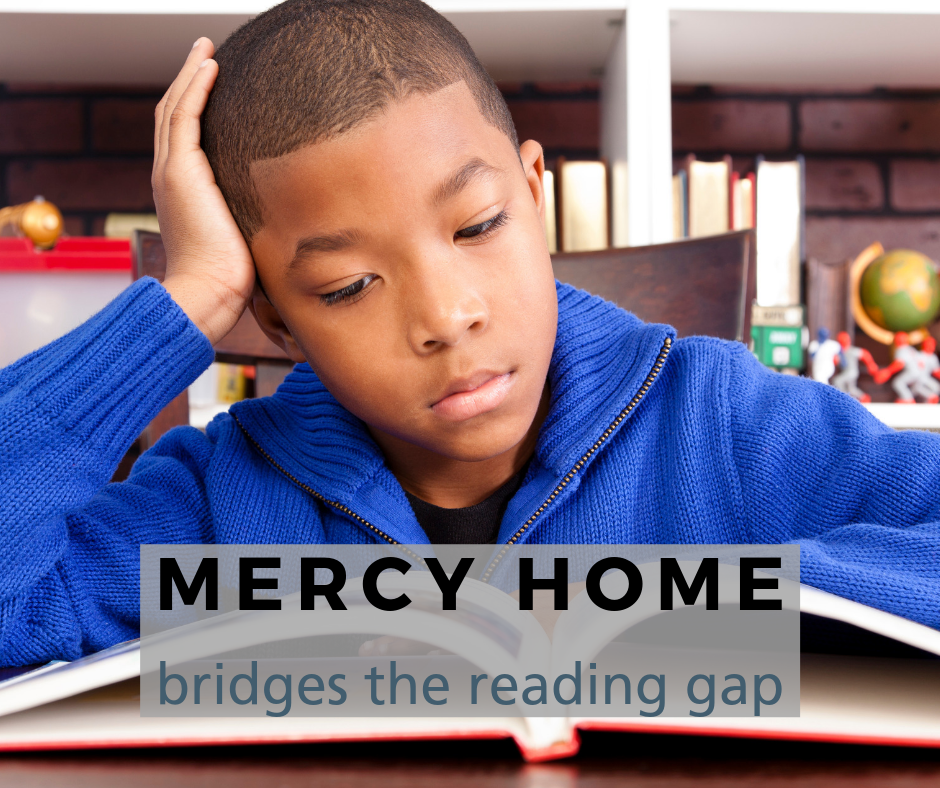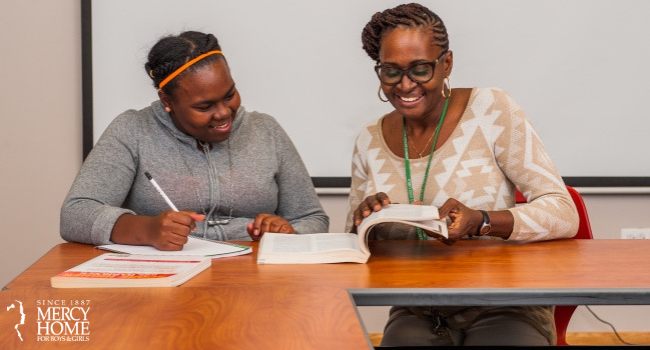Digital Detox: Helping Teens Unplug in a Virtual World
Young people are spending more time in front of their screens than ever, but how do you help them find...
February 11, 2025

Reading is the key to knowledge: it unlocks doors, helps us to learn, to grow and to understand the world. Unfortunately, many kids enter our care several reading levels behind their peers. In some cases, students advance to the next grade simply because they show up, without ever comprehending the material in front of them.
Mercy Home for Boys & Girls works to bridge the reading gap for our youth – to get them up to speed so they can unlock as many doors in their future as possible.
“Reading is tough, because if you’re really far behind – it’s hard to catch up quickly,” said Becca Goldstein, Mercy Home’s School Resources Coordinator. “But we see the guys put in good work. We have a great reading specialist who comes in who does really great work with some of the guys.”

When kids first arrive at Mercy Home, they perform a standardized test to evaluate where they are in their basic academic skills. We then match a child with a tutor to work with them after school in a one-on-one setting, ensuring they have all the necessary attention to address their specific needs.
But like anything in life, practice makes perfect, and it is not always easy to create an interest in reading for high-school-aged boys, whom Goldstein works with at Mercy Home.
“I push reading for pleasure. If you don’t have any homework – great – let’s go grab you a book,” Goldstein said. “We have access to some pretty cool resources.”
The Learning Center at Mercy Home contains an abundance of reading material that our kids can access at any time. For students to progress towards higher-level reading material, it’s important they find topics that pique their interest and keep them engaged, so they can build their skills through repetition.
“I find that books where they see themselves is the easiest way. If you see yourself reflected in the text it is easier to stay invested in it,” said Goldstein. “They have to see that reading is interesting to them and that they can learn something new about themselves.”
Not every person learns the same way, however. There is no foolproof formula that we can apply to every student and expect the same result. Sometimes it takes experimenting and out-of-the-box thinking. For some of the boys Goldstein works with, utilizing books on tape has been a tremendous help.
“Reading along with the book on tape, so it’s playing in their ear as they’re getting an audio recording of it and they’re following along,” Goldstein said. “And what’s great about that is a good book on tape is read by someone who is performing it – so there are different voices. You can hear the connotation and intonation in someone’s voices, and that makes a huge difference.”

Just as some students learn in different ways, measuring the progress of students can also require varying approaches. Traditional test scores and letter grades do not always paint a complete picture. Sometimes a shift in attitude can signify a much more significant achievement.
Goldstein witnessed this shift in one young man for whom the use of books on tape proved to be an effective learning tool.
“Everyone else was out here playing a game and he was sitting there in his room, without any prompting from any adults, listening to the book on tape and reading along,” she said. “It hardly ever happens, so that was proof that it was something that he felt good about. That was really cool to watch.”
29% of youth were not on track to graduate before coming to Mercy Home.
100% of High School seniors graduated after coming to Mercy Home.
Young people are spending more time in front of their screens than ever, but how do you help them find...
February 11, 2025
Healthy communication in the family system is incredibly important, yet sometimes it can feel hard to achieve. However, with practice...
February 24, 2024
It’s back-to-school time during a year like no other. Beyond the typical nervousness and anxiety that may come with starting...
August 24, 2021